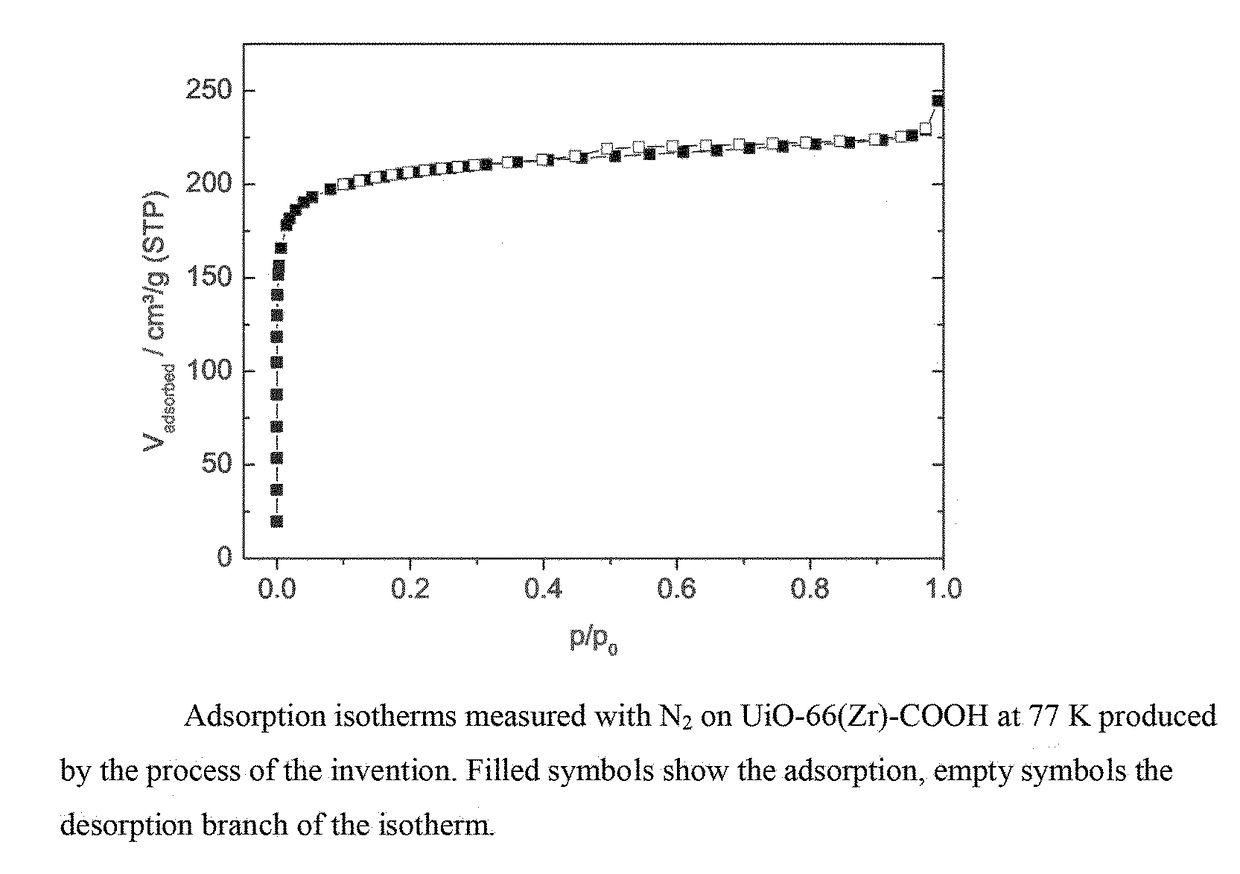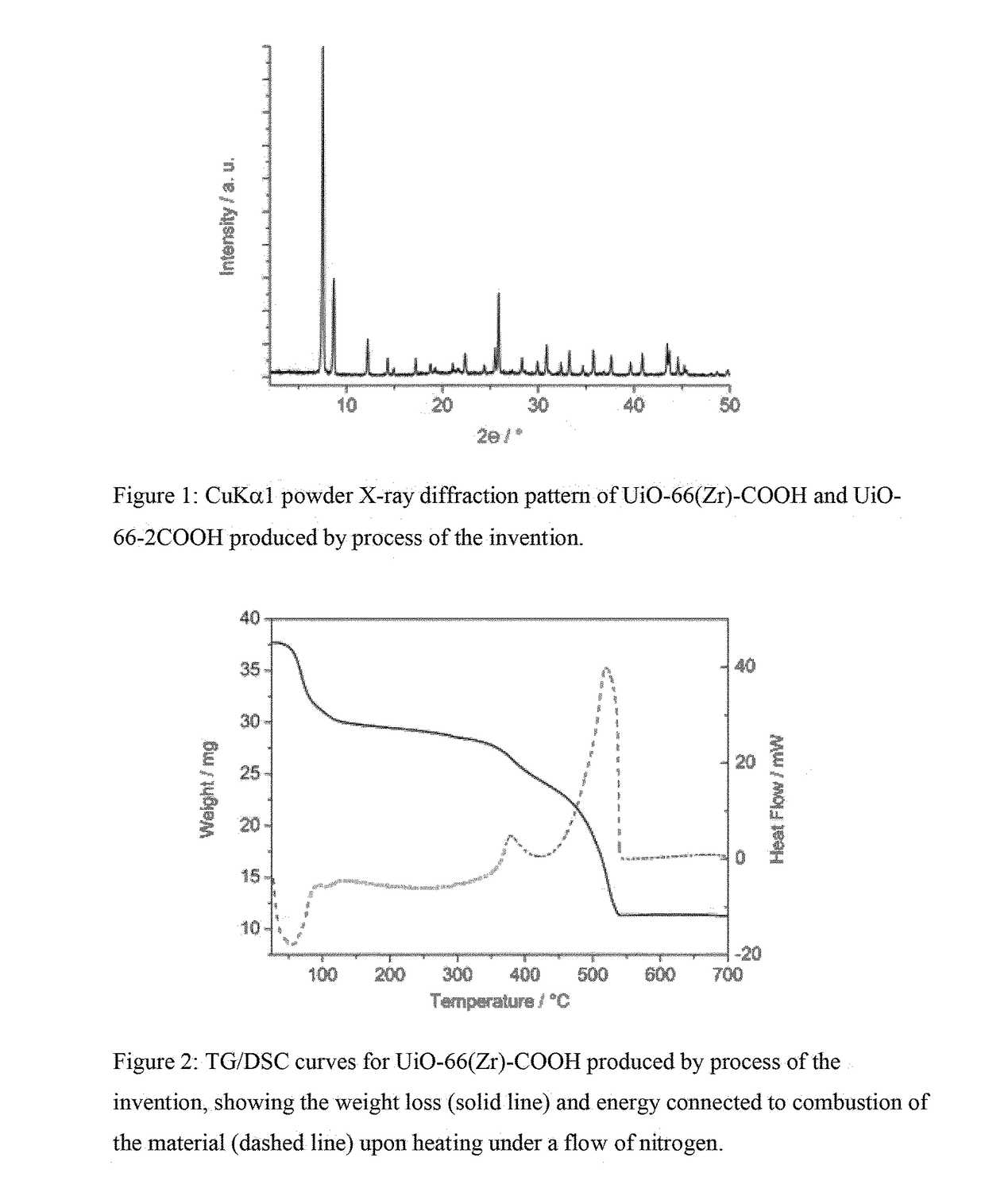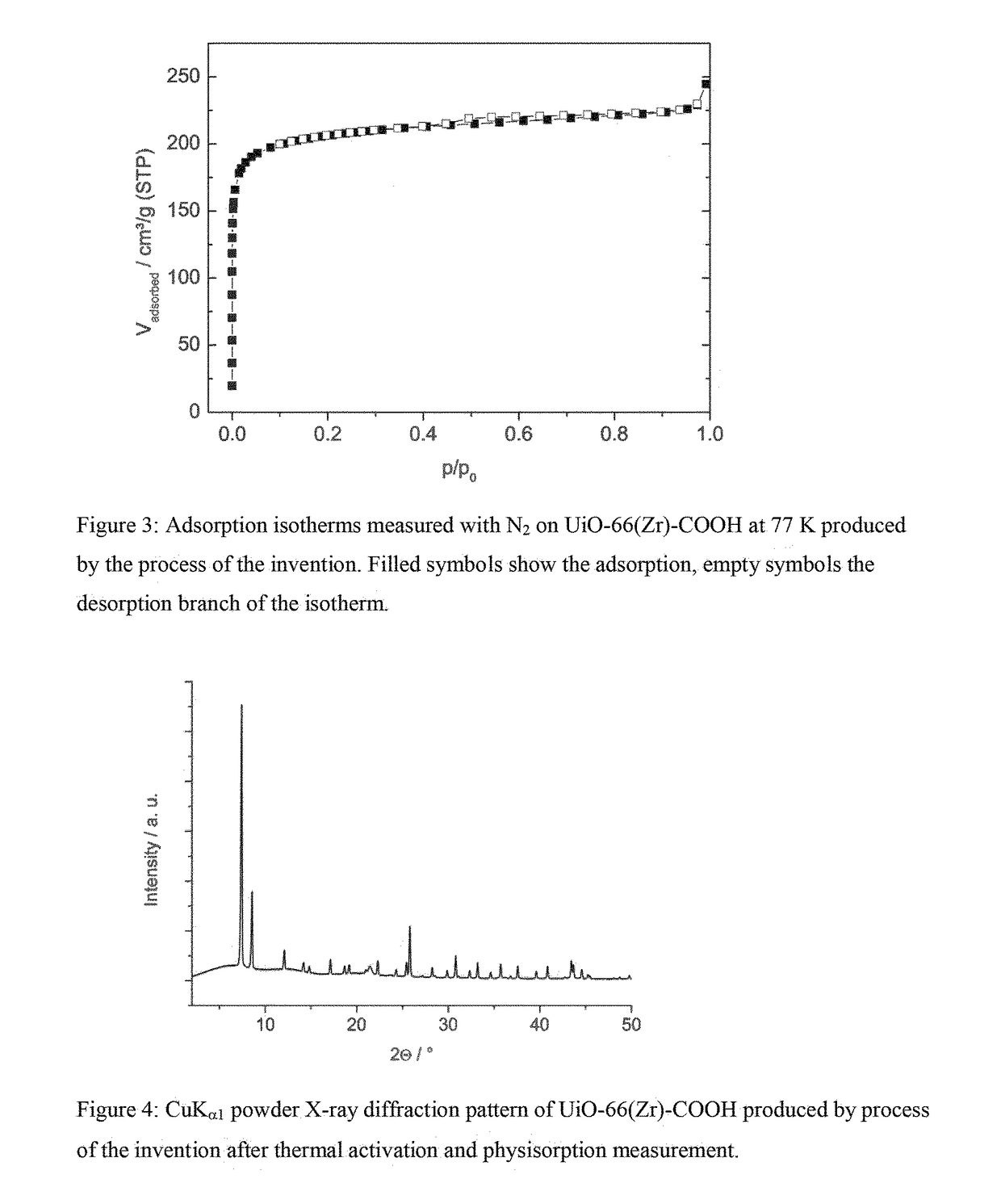Process for preparing a zirconium-based metal organic framework
a zirconium-based metal and organic framework technology, applied in the field of process for preparing metal organic frameworks (mofs), can solve the problems of increasing process costs, and affecting the effect of organic solvents
- Summary
- Abstract
- Description
- Claims
- Application Information
AI Technical Summary
Benefits of technology
Problems solved by technology
Method used
Image
Examples
examples
[0078]Techniques
[0079]Surface Area measurement
[0080]The specific surface area was determined by means of N2 physisorption measured on a Belsorp-mini apparatus at 77 K. Prior to the measurement the sample was activated at 373 K under vacuum for 3 h to remove occluded water molecules. The surface area was calculated by the BET-method (DIN 66131) and the Langmuir method (DIN 66135).
[0081]X-Ray Crystallography
[0082]The crystal structure was investigated by means of powder X-ray diffraction under ambient conditions in Bragg-Brentano-geometry utilizing Cu-Kα1-radiation.
[0083]Stability
[0084]The thermal stability was investigated by means of thermogravimetry coupled with differential scanning calorimetry. Therefore the sample was heated up with a rate of 1 K / min under a flow of nitrogen gas, constantly monitoring weight loss and the resulting heat of combustion.
[0085]IR-Spectroscopy
[0086]In-situ Diffuse Reflectence Infrared Fourier transform spectra (DRIFT) were recorded on KBr mixed with U...
PUM
 Login to View More
Login to View More Abstract
Description
Claims
Application Information
 Login to View More
Login to View More - R&D
- Intellectual Property
- Life Sciences
- Materials
- Tech Scout
- Unparalleled Data Quality
- Higher Quality Content
- 60% Fewer Hallucinations
Browse by: Latest US Patents, China's latest patents, Technical Efficacy Thesaurus, Application Domain, Technology Topic, Popular Technical Reports.
© 2025 PatSnap. All rights reserved.Legal|Privacy policy|Modern Slavery Act Transparency Statement|Sitemap|About US| Contact US: help@patsnap.com



